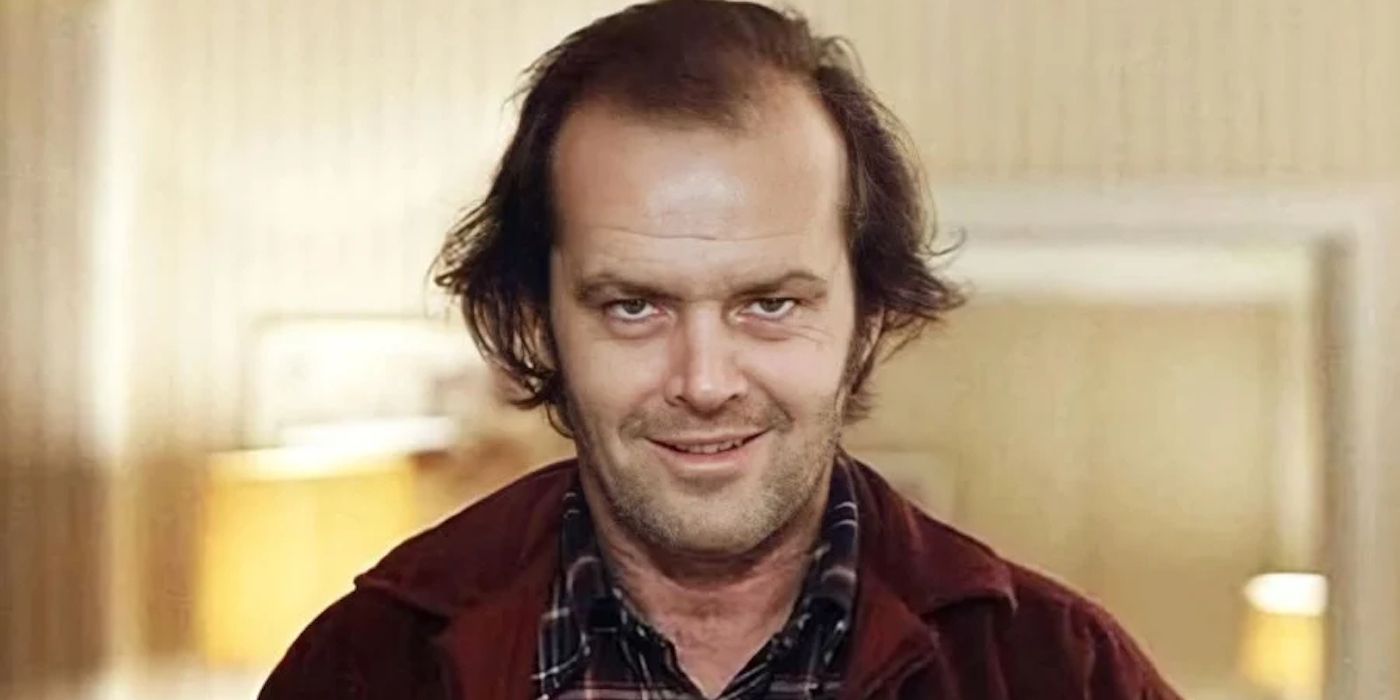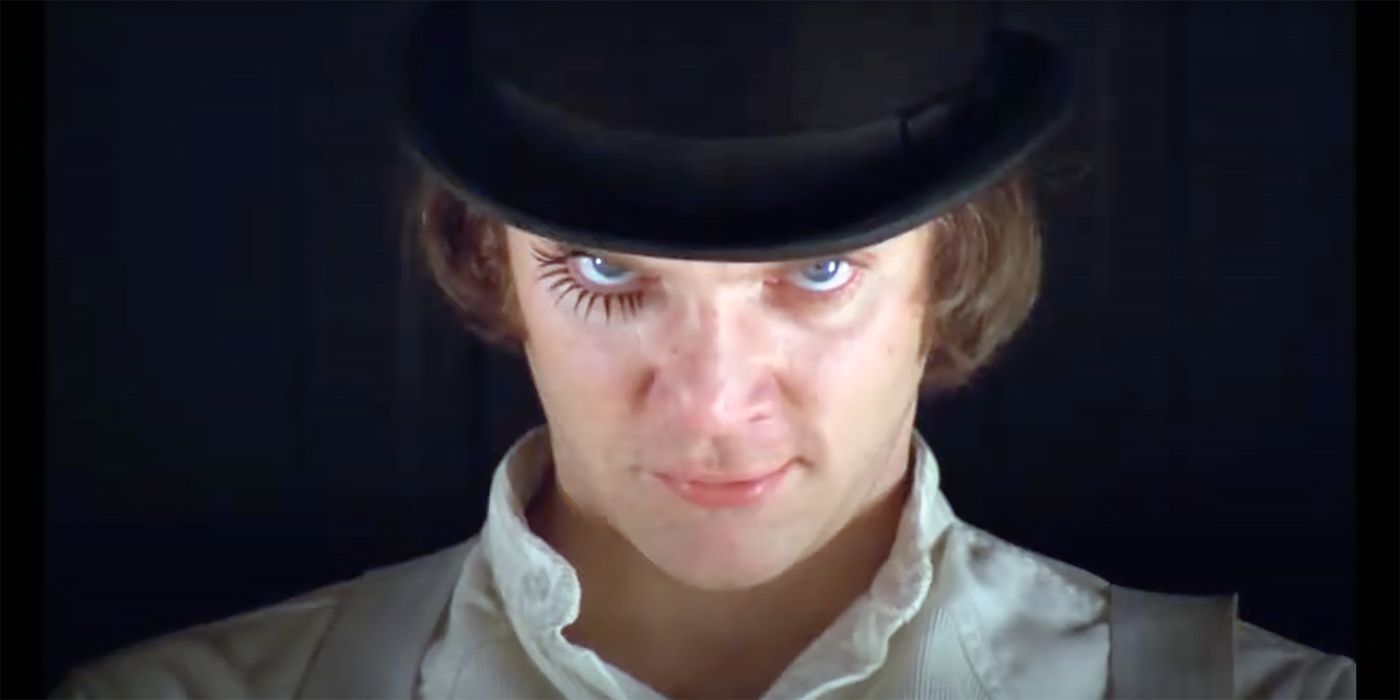"All work and no play makes Jack a dull boy." Over and over again, Stanley Kubrick's main character types these words in The Shining. It's at this point that Wendy (Shelley Duvall) realizes that her husband, Jack (Jack Nicholson) has snapped. It's one of the most harrowing moments in the history of cinema, and if you're a fan of the legendary filmmaker, you probably had visions of him rubbing his hands together behind the camera as he relishes another chance to visually capture one of his protagonists careening around the bend into the shadowy area that he so loves to frame main characters. It's a trademark of the director's long and storied career and is in direct contrast to the role of the hero's journey that has dominated modern storytelling. Throughout the history of cinema, we've grown accustomed to a traditional narrative that finds our protagonists overcoming the odds to defeat whatever hurdles stand in their way and accomplish a morally acceptable outcome. Kubrick is in no way interested in that. In fact, the more morally compromised he can make his protagonists, and the less righteous the message, the better.
Alex DeLarge Is One of Kubrick's Best Unlikable Protagonists
Perhaps the best example of how Kubrick is drawn to unlikable protagonists is Alex DeLarge (Malcolm McDowell) in his 1971 classic, A Clockwork Orange. Based on the novel by Anthony Burgess, the film's opening scene captures Alex in a tight shot and slowly pulls back to reveal that he and his "droogs" are enjoying a refreshment at a local milk bar. You can tell by the devilish Cheshire grin on his youthful face that Kubrick plans on bringing to life a wolf in sheep's clothing. The director has always sought out material that will allow him to paint the picture of a dark soul that seeks out its prey like a lion in the jungle. Alex doesn't disappoint as he and his droogies wreak havoc in the streets pillaging about without a care in the world victimizing whoever crosses his path.
The director has no interest in whether you like or dislike the depraved actions on the screen, only that you are engaged by the moral bankruptcy of his lead character and the backdrop that he has created for him to operate within. Kubrick then goes meta with Burgess's material as we witness the body of the film focus on the horrifying techniques employed by the government as it vies to extract the criminal tendencies from within Alex. The movie is a metaphor as his method of filming has always been about pulling the morality from his protagonists.
In Full Metal Jacket, Kubrick Uses an Entirely Different Approach
Not all of Kubrick's characters are as psychotic as Alex or Jack in The Shining. In Full Metal Jacket, he uses an entirely separate color palette daring you to find the goodness in his lead characters. The 1987 film, based on the book, Short Timers by Gustav Hasford, examines Matthew Modine's character "Joker" and the events surrounding a platoon of newbies going through boot camp with the 1st Marine Division in preparation for the TET Offensive in 1968. As a producer and co-writer of the screenplay, Kubrick was afforded more latitude in how he framed the characters in the film. The beauty of Full Metal Jacket is how the director creates a setting that is squared away and squeaky clean while his characters are undergoing immense inner turmoil in the first half of the movie and then unleashes wartime chaos in the latter half. Kubrick uses crisp, clean right angles in illustrating a boot camp barrack as privates "Joker" and Leonard "Gomer Pyle" Lawrence (Vincent D'Onofrio) suffer psychological abuse at the hands of the bombastic Gunnery Sargeant Hartman (R. Lee Ermey). Tasked with babysitting the out-of-shape and underperforming Private Pyle during training, Joker is reluctant and more concerned with his own status. His frustration with Pyle comes to a head when he and the other privates arrange a beating of Pyle as he is restrained in his bunk. Pyle eventually snaps and ends up killing the vulgar Hartman. In true Kubrick style, the bloody murder is juxtaposed against a freshly sterilized latrine using only the natural moonlight beaming through the windows for illumination.
In The Shining, the Overlook Hotel Is More than Just a Backdrop
A further examination of The Shining reveals how Kubrick uses the vacant Overlook Hotel as not only the backdrop but an imposing character in itself that contributes to the unraveling of the lead character. He again captures the exposed angles of the vast empty ballrooms, elegant banquet halls, and angled hallways as having a detrimental agency of their own in contributing to Jack Torrance's descent into madness. Kubrick manages to make the wide-open areas feel ghostly, suffocating, and unforgiving, a looming reminder of the loneliness and emptiness inside the troubled character. What we see in the director's interpretation of Stephen King's novel is the exact opposite of a hero's journey. Instead, it is the account of a quick-to-anger alcoholic who resents his own wife and child while spiraling into murderous psychopathy.
Kubrick Delves into Black Comedy with Dr. Strangelove
In the cheeky, Dr. Strangelove: How I Learned to Stop Worrying and Love the Bomb, Kubrick delves into black comedy while still using an almost entirely deplorable set of characters. Set against the fear of the Cold War in the mid-sixties, Strangelove is the director's only real foray into modern politics and the ruthless entitlement of its players. Based on Red Alert, by Peter George, Kubrick again produced and co-wrote the screenplay and his tweaks are evident throughout. The film depicts the actions involving an absurdly brash and calculated General Buck Turgidson (George C. Scott) and bumbling United States President Merkison (Peter Sellers) as they deal with the fallout of the events triggered by an insane Brigadier General Ripper (Sterling Hayden) that has landed them on the precipice of a nuclear war with Russia. Kubrick's portrayal of Dr. Strangelove (Sellers again in multiple roles) as a wheelchair-bound ex-Nazi who gleefully suggests destroying mankind and starting from scratch is a tongue-in-cheek shot at the incompetency of not only politicians but humanity itself.
By visually redefining the traditional protagonist and thumbing his nose at the idea that lead characters have to have a commendable ideology and redemptive core values, Kubrick will forever be remembered for challenging the status quo. His willingness to show the undesirable and hostile side of humanity through nihilism, violence, and crassness forces us to examine who we are and what we truly value. He had a keen understanding that there was a place in filmmaking for turning convention and familiarity on their ear and that audiences also like to see traditional expectations defied. As long as there's some kind of emotional connection, creativity in cinema can be appreciated in many forms. Kubrick explored them all.



.jpg)